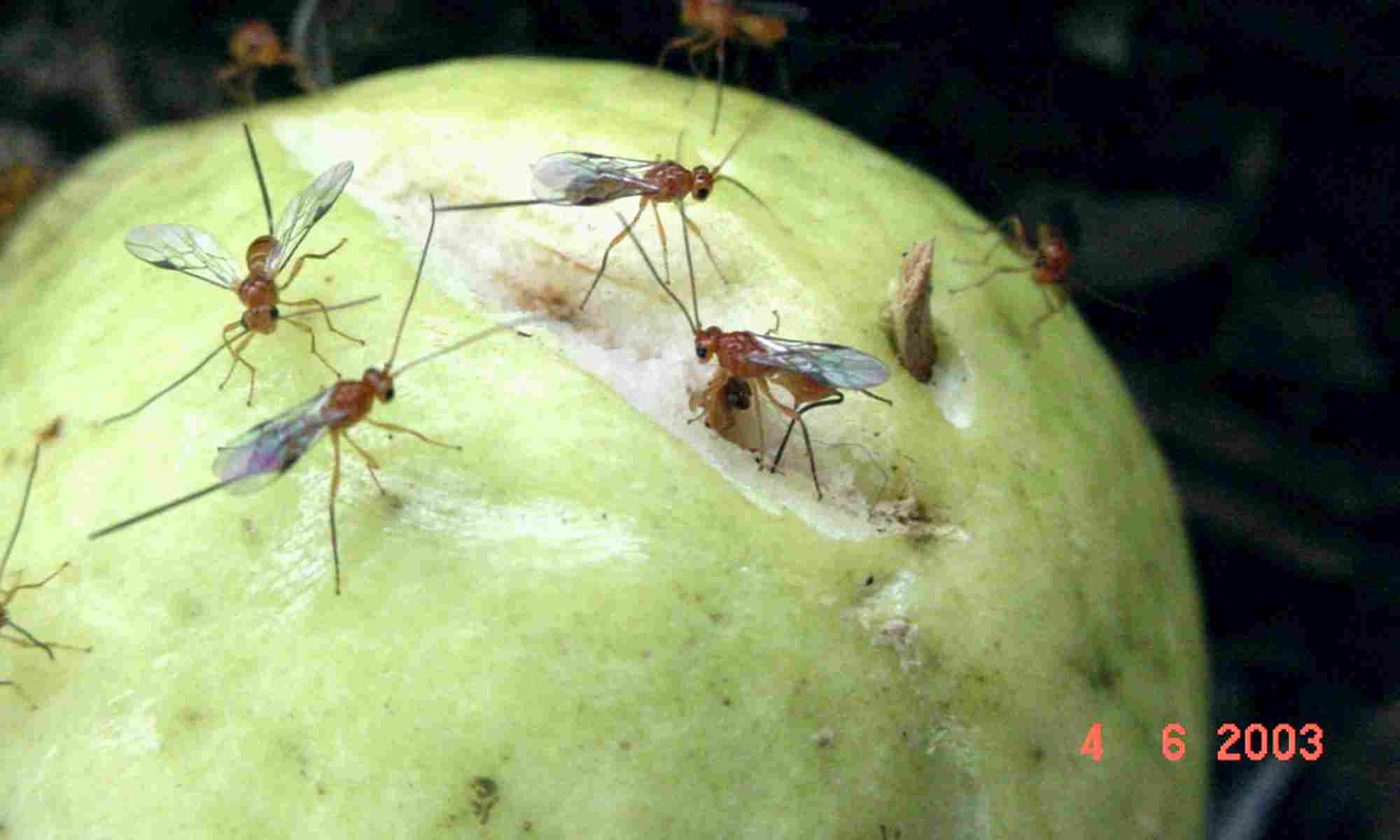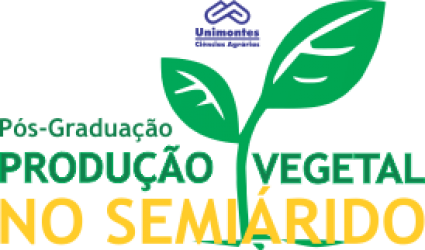- Version
- Download 4
- Tamanho do Arquivo 447.67 KB
- Data de Criação 14/06/2021
- Download
RODRIGUES, Maria Luisa Mendes. Métodos de aplicação de óleos essenciais no controle da antracnose em frutos de bananeira “Prata-anã”. 2012. 86 p. Dissertação (Mestrado em Produção Vegetal no Semiárido) – Universidade Estadual de Montes Claros, Janaúba, 2012.
Para se verificar os efeitos in vitro e in vivo dos óleos essenciais de cravo, tomilho, gengibre e árvore-do-chá no desenvolvimento de Colletotrichum musae, associados a duas formas de aplicação, uma de contato e outra por fumigação, e posteriormente avaliar as características físicas e químicas dos frutos, desenvolveram-se dois experimentos. No primeiro, objetivou-se avaliar o efeito dos óleos essenciais sobre o desenvolvimento de Colletotrichum musae in vitro e in vivo pelo método de aplicação por contato. Foram utilizadas soluções de quatro óleos essenciais das espécies de cravo (Eugenia caryophyllus), árvore- do-chá (Melaleuca alternifólia), tomilho (Thymus vulgaris), gengibre (Zingiber officinale), em quatro concentrações: 2, 4, 6 e 8 µL.mL-1 que foram adicionadas aos meios de cultura. Adotou-se como testemunha o meio de cultura apenas. As variáveis avaliadas foram germinação, crescimento micelial e produção de conídios. Para o experimento in vivo os frutos foram imersos em soluções contendo os diferentes óleos essenciais nas concentrações de 2, 4, 6 e 8 µL.mL-1 , a testemunha consistiu na imersão apenas em água sem o óleo. A cada 3 dias foi avaliado incidência e severidade da antracnose. Os experimentos foram conduzidos em delineamento inteiramente casualizado em um esquema fatorial 4x4+1. As médias foram submetidas à análise estatística não paramétrica Kruscal-Wallis. A concentração de 6 µL/mL do óleo de cravo é a mais eficiente em controlar o crescimento micelial, esporulação e germinação de C. musae. No experimento in vivo, o tratamento por imersão dos frutos de bananeira Prata-anã em solução de óleos essenciais não é recomendado por causar fitotoxidez. O segundo experimento visou a determinar a melhor concentração e óleo essencial para controlar o desenvolvimento do C. musae in vitro e in vivo e posteriormente avaliar as características físicas e químicas dos frutos tratados com óleos essenciais pelo método de fumigação. Para realizar esse método, alíquotas de óleo essencial foram adicionadas em papel-filtro colados na tampa de cada placa de Petri nas concentrações de 2, 4, 6 e 8 µL. As variáveis avaliadas foram germinação, crescimento micelial e produção de conídios. Para o experimento in vivo os frutos foram embalados em sacos plásticos sobre uma bandeja de polietileno expandido juntamente com pedaços de papel-filtro medindo 3 cm 2 contendo alíquotas dos óleos essenciais nas concentrações de 80, 160, 240 e 320 µL.mL-1 , as testemunhas consistiram na adição de 80 µL de água destilada no papel-filtro e no tratamento com o fungicida Imazalil na concentração de 2 mL/ L. A cada 3 dias avaliaram-se incidência e severidade da antracnose. Para avaliar as características físicas e químicas dos frutos foi realizado um experimento aplicando os óleos essenciais na concentração de 320 µL por fumigação. Os experimentos foram em delineamento inteiramente casualizado em esquema fatorial de 4x4+2. As médias foram submetidas à análise estatística não paramétrica Kruscal-Wallis. Os óleos de árvore-do-chá e gengibre controlaram a incidência e a severidade da antracnose nos frutos. As características pós- colheita de perda de massa fresca e coloração do pericarpo foram mantidas pelos óleos de gengibre e tomilho.
Palavras-chave: Antracnose, Banana, Óleo essencial.
Use of essential oils in the control of anthracnose in “Prata-anã” banana fruits
To verify the effects in vitro and in vivo of the essential oils of clove, thyme, ginger and tea tree oil in the development of Colletotrichum musae, associates to two application ways, one by contact and another by fumigation, and later to evaluate the physical-chemical characteristics of the fruits, two experiments were carried out. In the first one, the objective was to evaluate the effect of the essential oils on the development of Colletotrichum musae in vitro and in vivo by the application method for contact. Solutions of four essential oils of the species clove (Eugenia caryophyllus), tea tree oil (Melaleuca alternifólia), thyme (Thymus vulgaris), ginger (Zingiber officinale) were used, in four concentrations: 2, 4, 6 and 8 µL.mL-1 that were added to the culture media. It was adopted as control only the culture medium. The appraised variables were germination, mycelia growth and conidia production. For the experiment in vivo the fruits were immersed in solutions containing the different essential oils in the concentrations of 2, 4, 6 and 8 µL.mL-1 , the control consisted of the immersion just in water without the oil. Every 3 days it was evaluated incidence and severity of the anthracnose. The experiments were carried out in an entirely randomized design in a factorial scheme 4x4+1. The averages were submitted to Kruscal-Wallis no parametric statistical analysis. The concentration of 6 µL/mL of clove oil is the most efficient in controlling the mycelia growth, sporulation and germination of C. musae. In the experiment in vivo, the treatment by immersion of Prata-anã banana fruits in solution of essential oils is not recommended since causing phytotoxity. The second experiment aimed to determine the best concentration and essential oil to control the development of C. musae in vitro and in vivo and later to evaluate the physical-chemical characteristics of the fruits treated with essential oils by the fumigation method. To accomplish that method, dosages of essential oil were added in filter paper glued in the cover of each Petri plate at concentrations of 2, 4, 6 and 8 µL. The appraised variables were germination, mycelia growth and conidia production. For the experiment in vivo the fruits were wrapped in plastic sacks on a tray of expanded polyethylene together with pieces of filter paper measuring 3 cm 2 containing dosages of the essential oils in the concentrations of 80, 160, 240 and 320 µL.mL-1 , the control consisted of the addition of 80 µL of distilled water on the filter paper and in the treatment with the Imazalil fungicide in the concentration of 2 mL/L. Every 3 days incidence and severity of the anthracnose was evaluated. To evaluate the physical-chemical characteristics of the fruits an experiment it was accomplished applying the essential oils in the concentration of 320 µL by fumigation. The experiments were in entirely randomized designs in factorial scheme 4x4+2. The averages were submitted to Kruscal-Wallis no parametric statistical analysis. The oils of tea tree oil and ginger controlled the incidence and the severity of the anthracnose in the fruits. The post-harvest characteristics of loss of fresh mass and coloration of the pericarp were maintained by the ginger and thyme oils
Keywords: Anthracnose, Banana, Essential oil.

